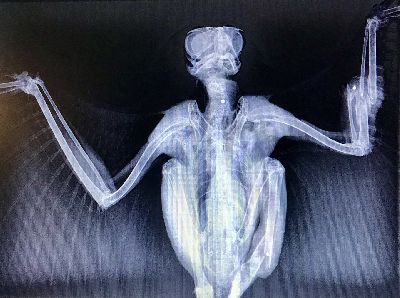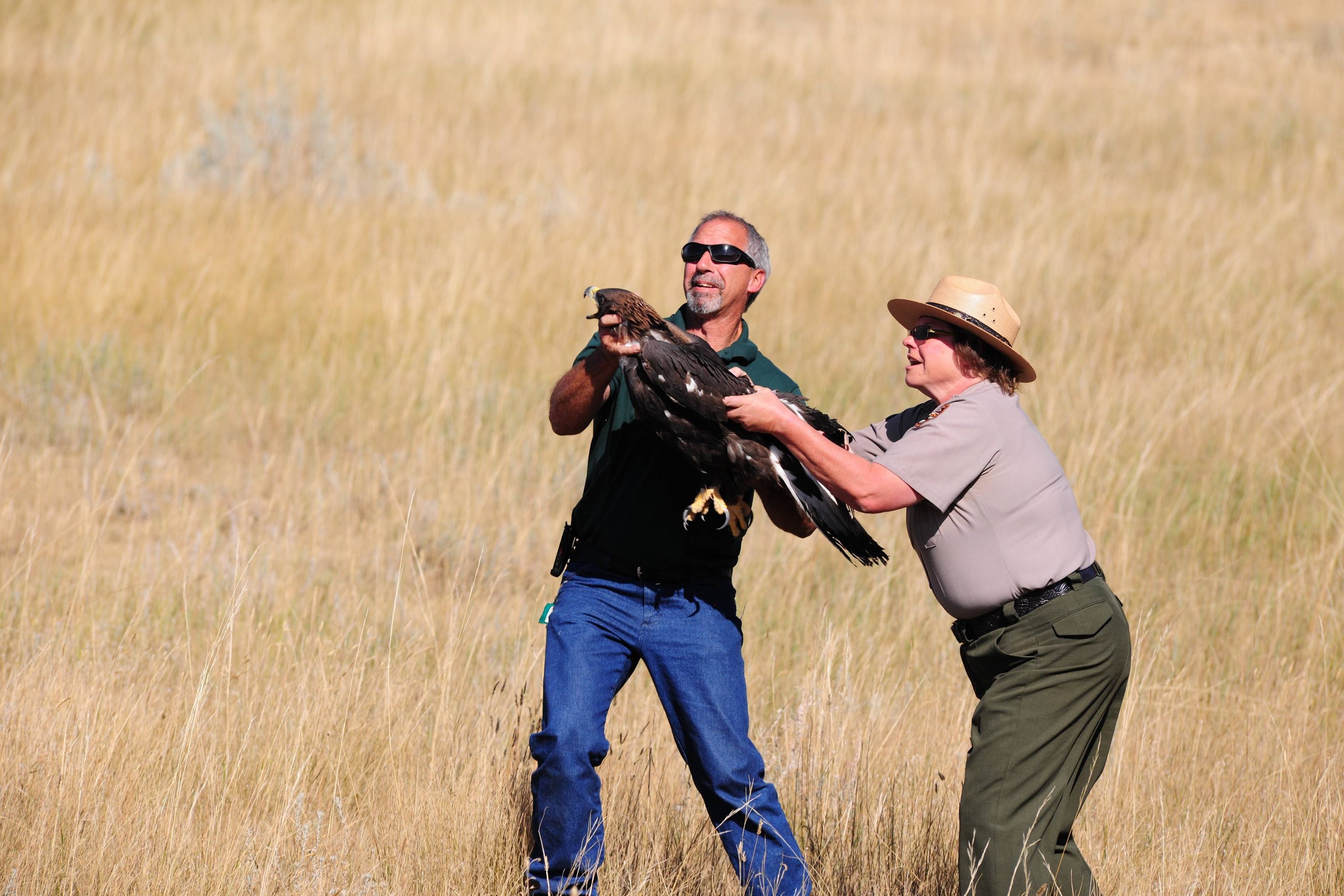Raptor Rehabilitation
The Dakota Zoo conducts medical treatment and rehabilitation for numerous raptors each year, specializing in endangered and threatened species, particularly eagles.  We typically receive about 30 birds per year although sometimes as many as 65 birds have been received in a single year. Most of these birds are victims of run ins with power lines, barbed-wire fences or automobiles, but we also receive birds that have been shot, or chicks that have been blown out of the nest before they are ready to fledge.
We typically receive about 30 birds per year although sometimes as many as 65 birds have been received in a single year. Most of these birds are victims of run ins with power lines, barbed-wire fences or automobiles, but we also receive birds that have been shot, or chicks that have been blown out of the nest before they are ready to fledge.
The first picture depicts an eagle examination circa 1971-The Dakota Zoo has been a raptor rehabilitation center for over 40 years.
Upon arrival at the Zoo, the condition of each bird is assessed, veterinary care is provided as appropriate and the bird is placed in an off-exhibit area where they can rest and recover without being disturbed. Each bird received is x-rayed as part of an ongoing study to assist with identifying poachers or particular areas where birds may be shot. Information on birds that have been shot is relayed to the U.S. Fish & Wildlife Service for investigation and prosecution.
One of the most common injuries suffered by birds are bruises to the wing muscles. This usually occurs when the birds fly into an object such as a power line or fence. With bruises, typically a bird just needs time to heal, and is normally able to fly within a couple of weeks. A more serious and all too common injury is broken wing bones. The wing bones are delicate and can easily be damaged beyond repair. When wing bones are broken, Zoo veterinarians will re-set and pin the bones if the damage is not too severe. In severe cases, a portion of the wing may need to be amputated.
The Zoo does not receive many orphaned raptors. When left alone, many adult birds will continue to provide food and protection for young birds that have left the nest too early. The public is encouraged to leave young birds that they find alone and let nature take its course. Even though we are able to raise a young hawk or owl to adulthood, it is much harder to acclimate them to life in the wild.
 By federal law, all raptors are the property of the US Fish & Wildlife Service, and the Dakota Zoo assists with veterinary care and rehabilitation on a permitted basis. USFWS has been instrumental in providing informational exhibits, flight pens and holding pens that greatly aid the Zoo in providing proper care for injured birds and displaying them in a comfortable area.
By federal law, all raptors are the property of the US Fish & Wildlife Service, and the Dakota Zoo assists with veterinary care and rehabilitation on a permitted basis. USFWS has been instrumental in providing informational exhibits, flight pens and holding pens that greatly aid the Zoo in providing proper care for injured birds and displaying them in a comfortable area.
The second picture is of a juvenile bald eagle released March 3, 2011 in Theodore Roosevelt National Park.
While we enjoy having raptors on exhibit and being able to educate Zoo visitors about them, it is a far better feeling when we are able to rehabilitate and return a recovered bird back into the wild.
